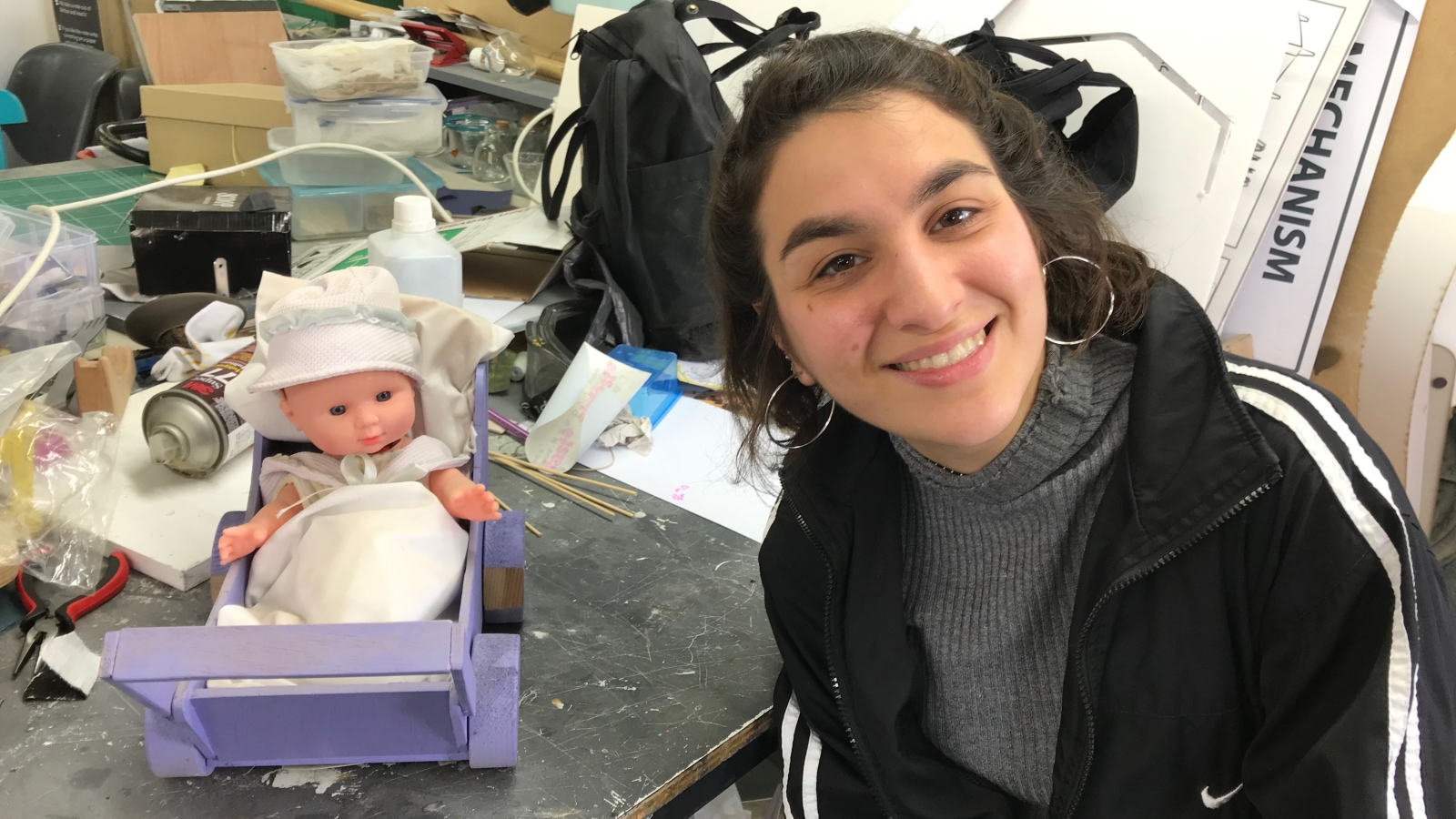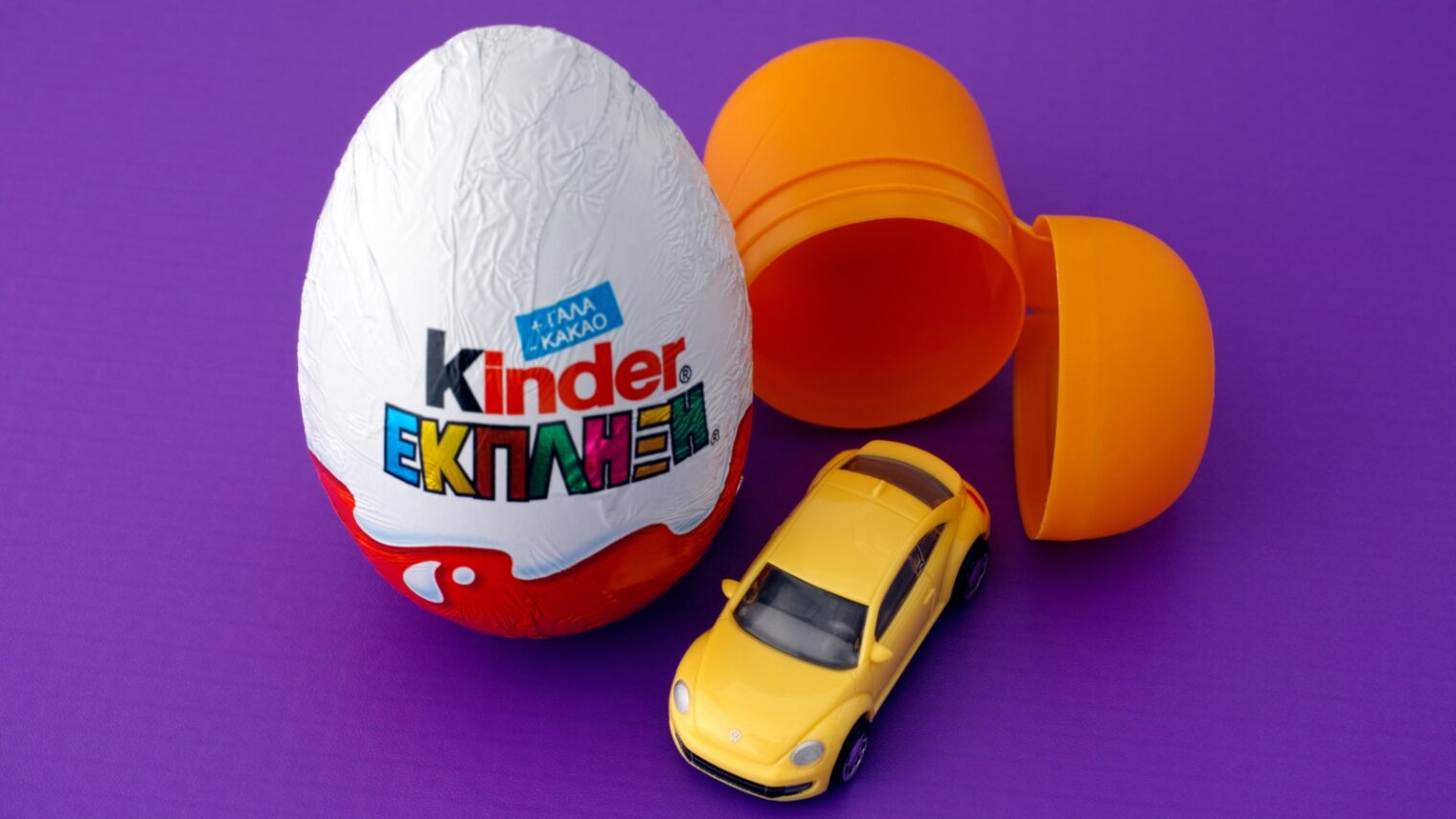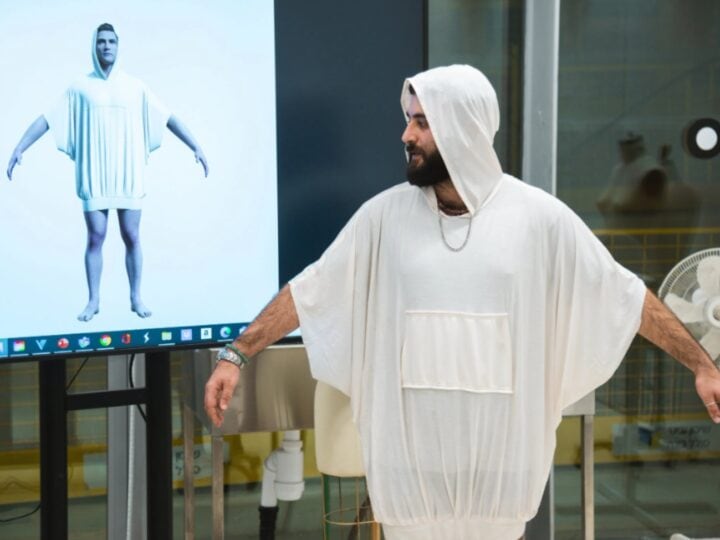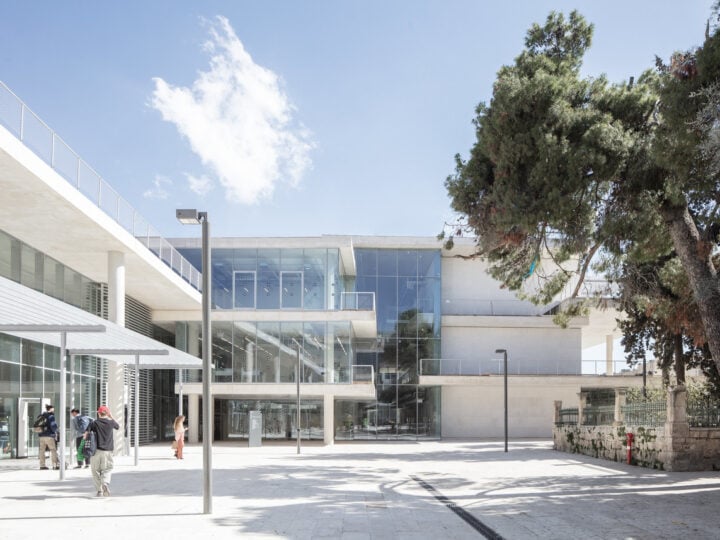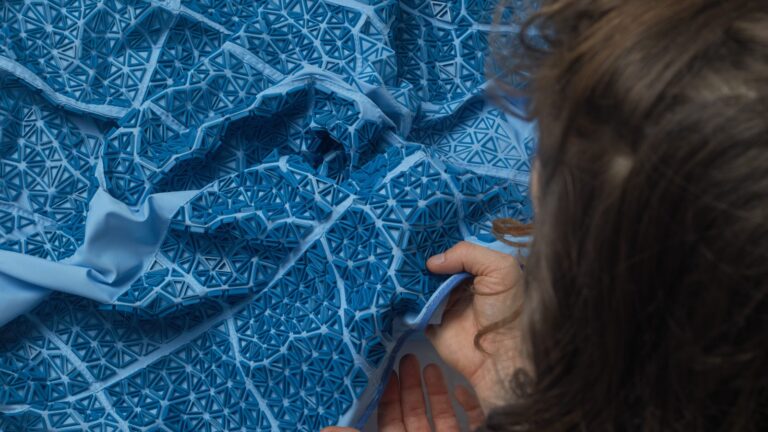If pigs had wings they could fly, or as Israelis phrase it: If grandmas had wheels they could be cars. This colorful popular expression catapulted a unique toy idea for Kinder Surprise Eggs in the mind of Shanni Levy, an industrial design student at Bezalel Academy of Art and Design in Jerusalem.
“I thought about what can be surprising for children and I decided to use something Kinder often uses – a wheel mechanism that pulls back to power it forward – adding a surprising Israeli touch,” says Levy.
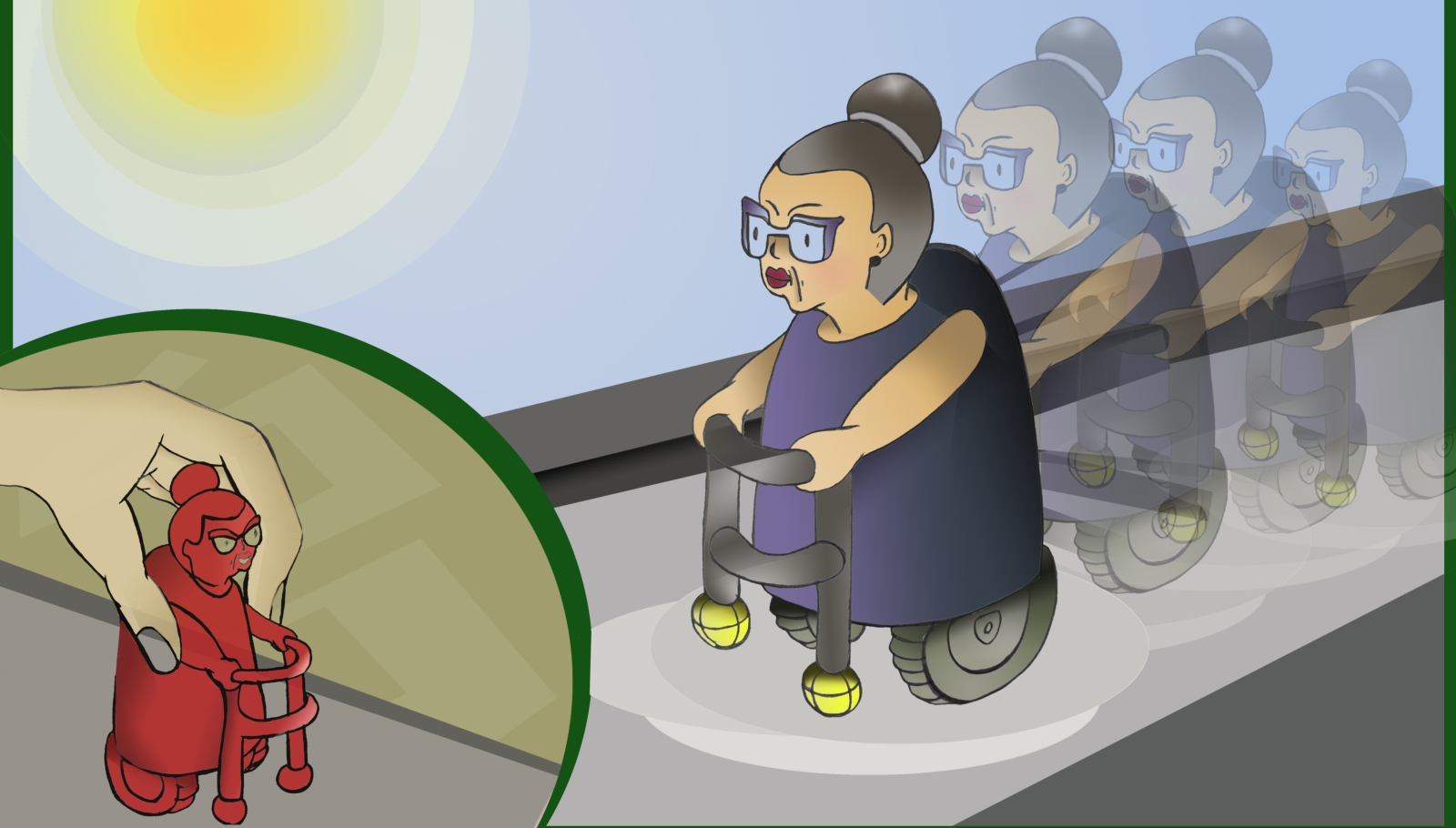
She is one of 20 students in Prof. Yaron Loubaton’s toy design class, which has partnered for the past two years with the Kinder development studio to dream up fun giveaways hiding inside the globally popular chocolate eggs made by Italian company Ferrero.
Kinder is not the only multinational brand looking for fresh ideas in the Jerusalem academy. LEGO’s development studio in Denmark is also tapped into the talent of Bezalel’s industrial design students.

Loubaton tells ISRAEL21c he is always looking for opportunities to bring real clients in contact with the students in his toy design class, which he’s been teaching for 13 years. This provides valuable experience in the process of delivering a product to a customer.

“In 2008 we had a big collaboration with Spin Master, one of the biggest toy companies in North America,” he says. “You really have to have innovative ideas but also understand the DNA of the company and what you can and cannot do with the toy. It’s a big challenge.”
The LEGO collaboration came about through a former Bezalel student, Yoel Mazor, who realized a long-held dream of working for the iconic Danish toy company.
“Two years ago, Yoel convinced his managers to give us a try. We did a successful pilot and then they wanted to do it again. They chose several of our concepts last year and are in the process of choosing some from the class this year,” relates Loubaton.
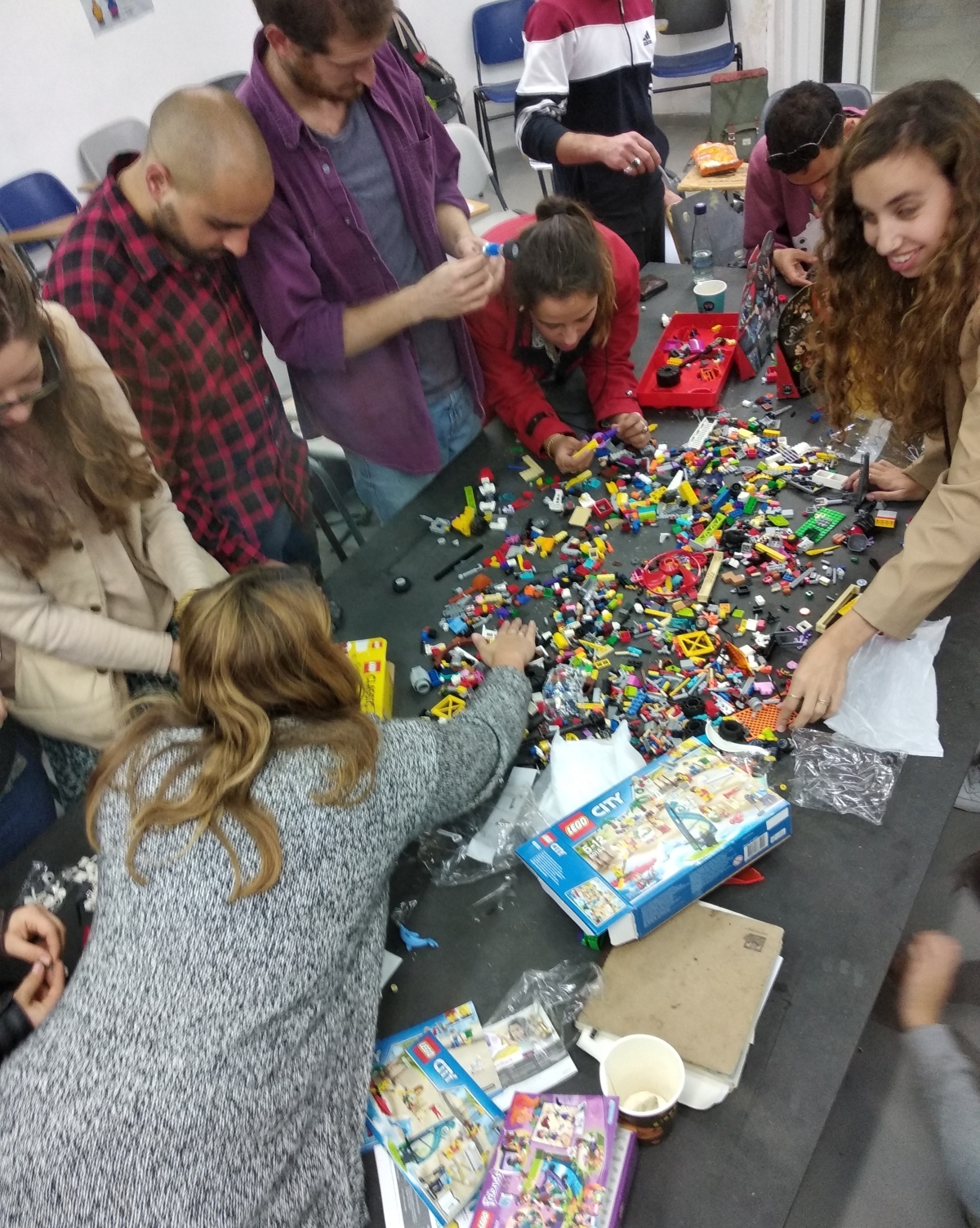
The collaboration with Kinder was similar. Loubaton broached the proposal about six years ago to a colleague who was then working at Kinder. It took four years to be approved, but after the first trial the company came back for more.
“Kinder has had some collaboration with faculties of design in Europe, but we were told our collaboration was especially successful,” says Loubaton. “They chose eight concepts and paid for them and now we will see if they will go into the candies. There is no guarantee, but this company is exposed to so many concepts and that they chose eight of ours is a big win.”
Testing with groups of children
The development process begins with in-class conceptual design exercises and a personal briefing by company representatives to explain guidelines. For example, Kinder toys are geared to ages 3-8 and must be of a size and shape that does not present a choking hazard.
The design sketches deemed promising enough to get to prototype stage are 3D-printed and tested by groups of children to gauge their responses.

That was Ori Blich’s favorite part of the exercise. “I have two young nieces of exactly the right age for playing with Kinder so I tested my mock-ups on them,” he tells ISRAEL21c.
Blich’s prototypes included little launchers. “My nieces were fighting over them, so I knew it was successful,” he says with a laugh.
“Then we tested our prototypes on children in Yaron’s kibbutz. They moved from station to station and played with the toys. I asked them to tell me what they could imagine jumping off the launcher. It was interesting to see how potential clients imagined the toy.”
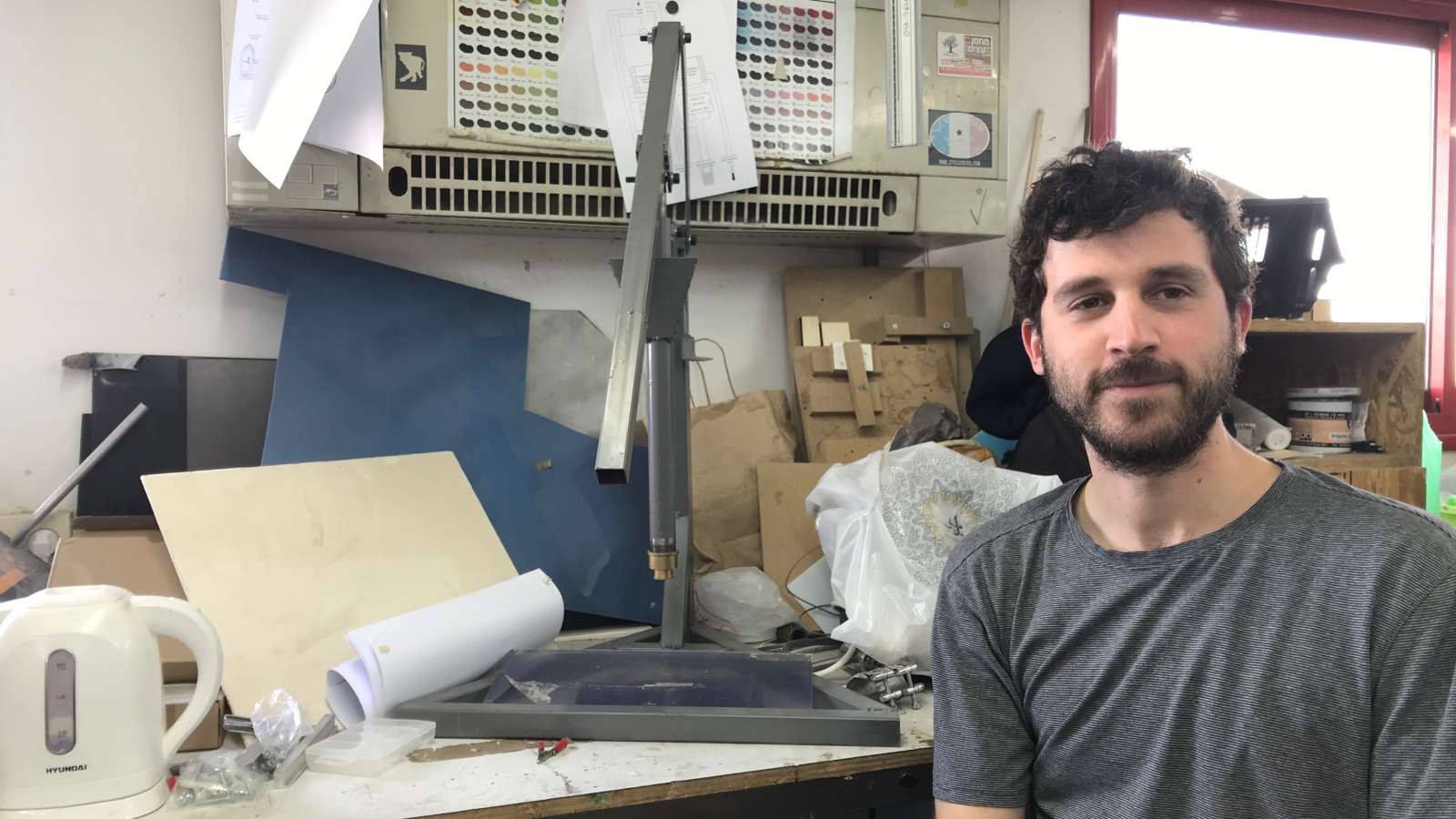
Adi Laxaviezer thought up a foldable toy with appeal to consumers beyond the target age range. “I wanted to make something that parents would be excited to get, because adults also like Kinder Eggs,” she explains.
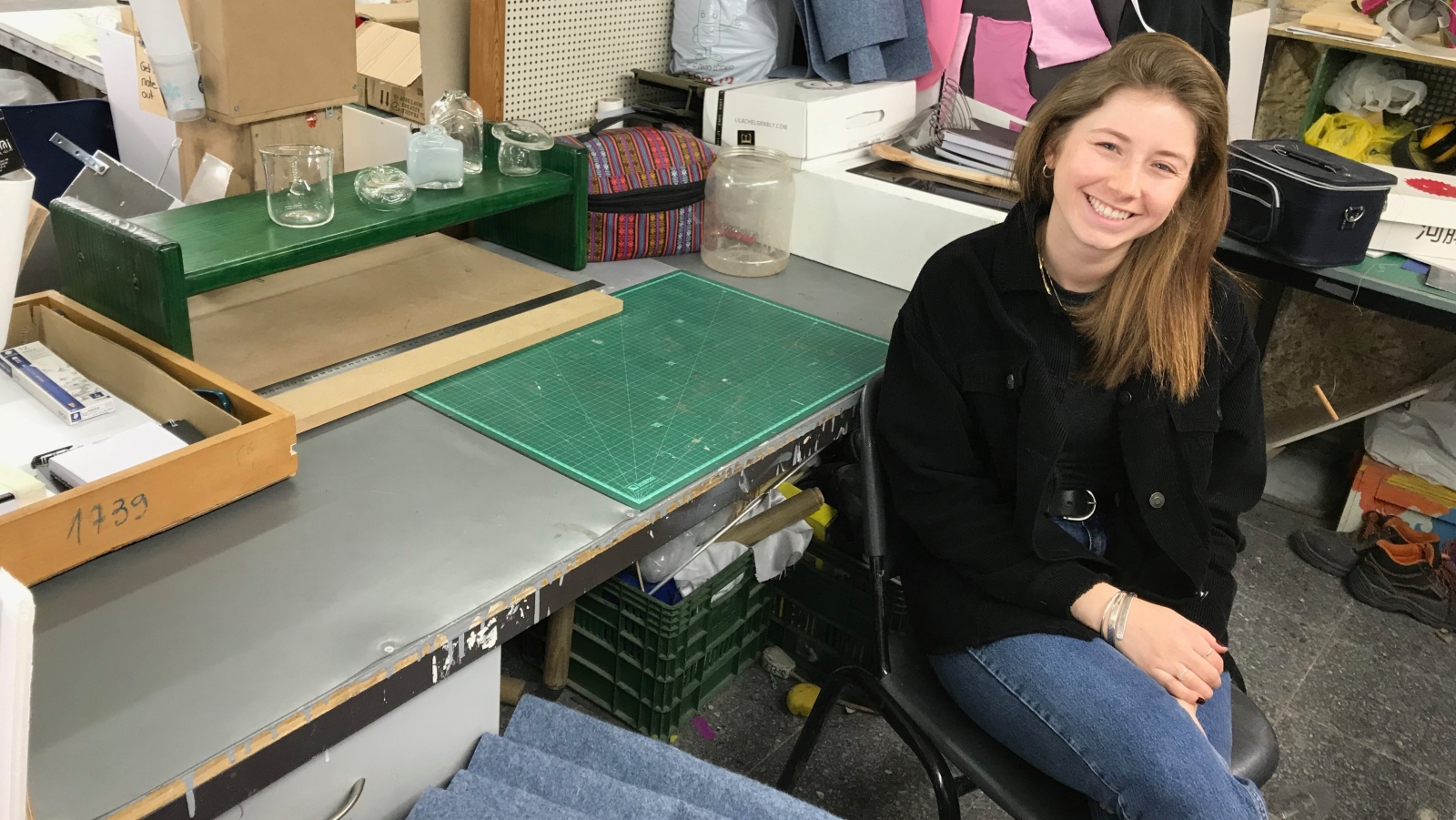
Because of confidentiality rules, Loubaton can’t share specifics about the designs that were accepted by Kinder and LEGO, nor can we show pictures of them.
Even those toy ideas that didn’t make the cut – including Levy’s “grandma on wheels” — provided valuable lessons for the Bezalel students.
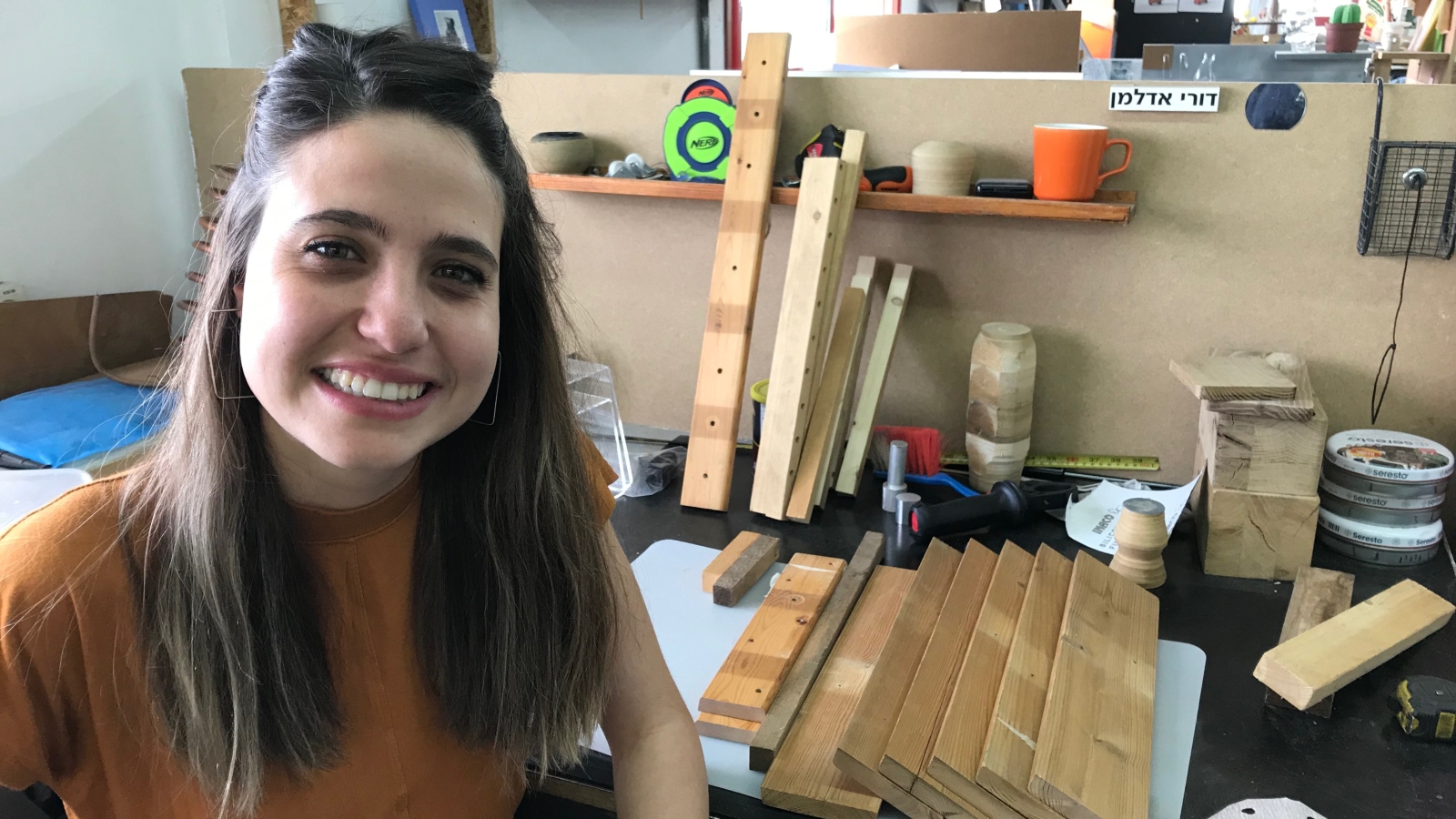
“I had three ideas they just didn’t like so three weeks before [the deadline] I had to invent something new,” Shir Yisraeli tells ISRAEL21c.
Kinder liked her prototype butterfly toy but it may require too much manual labor to produce cost-effectively.
“It was really hard,” says Yisraeli. “For the first time you’re not the one to decide what you’re going to design and how you’re going to do it. But it was an amazing experience because we learned how to design something that puts together our own ideas with what the customer requires.”
